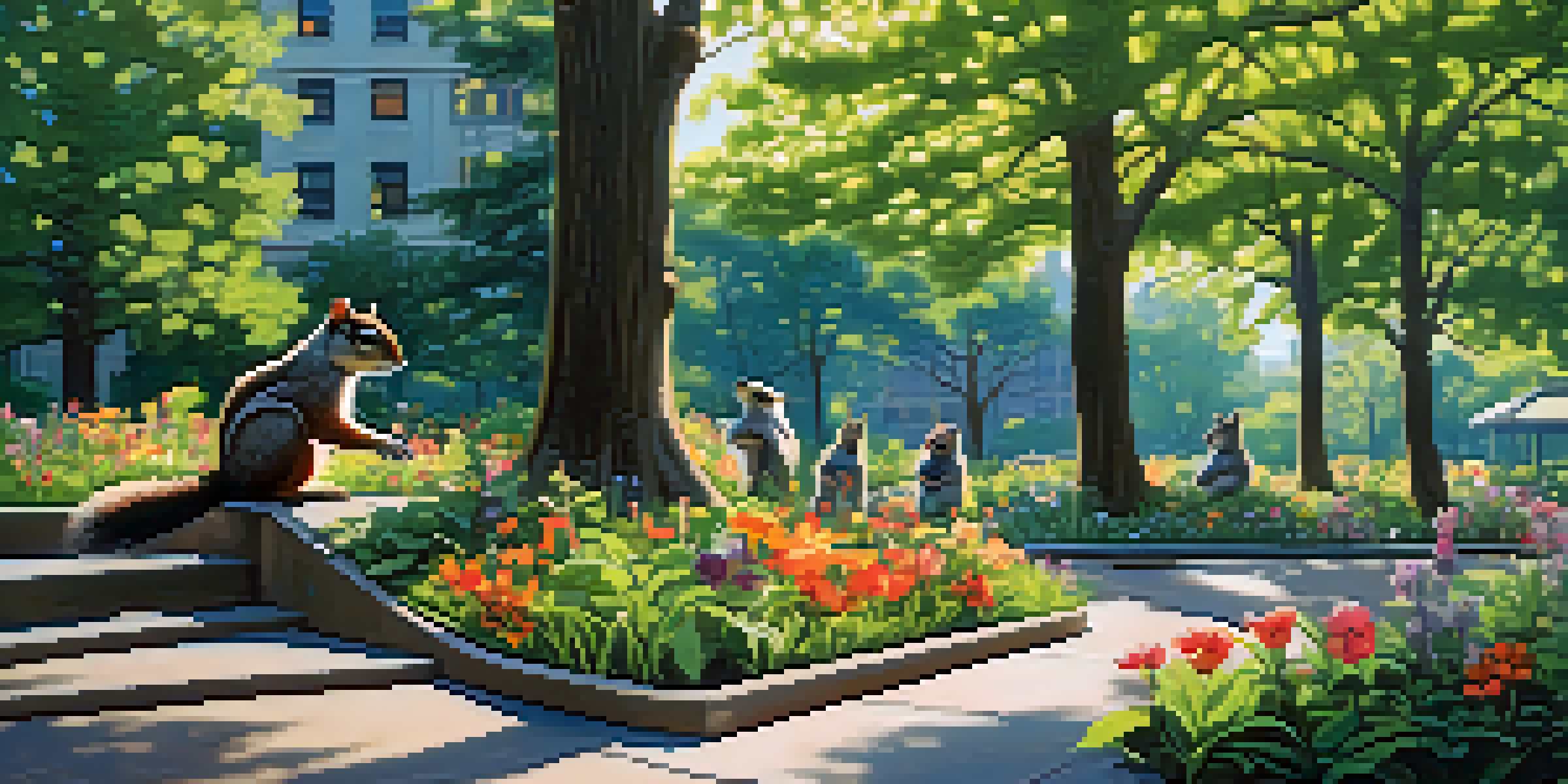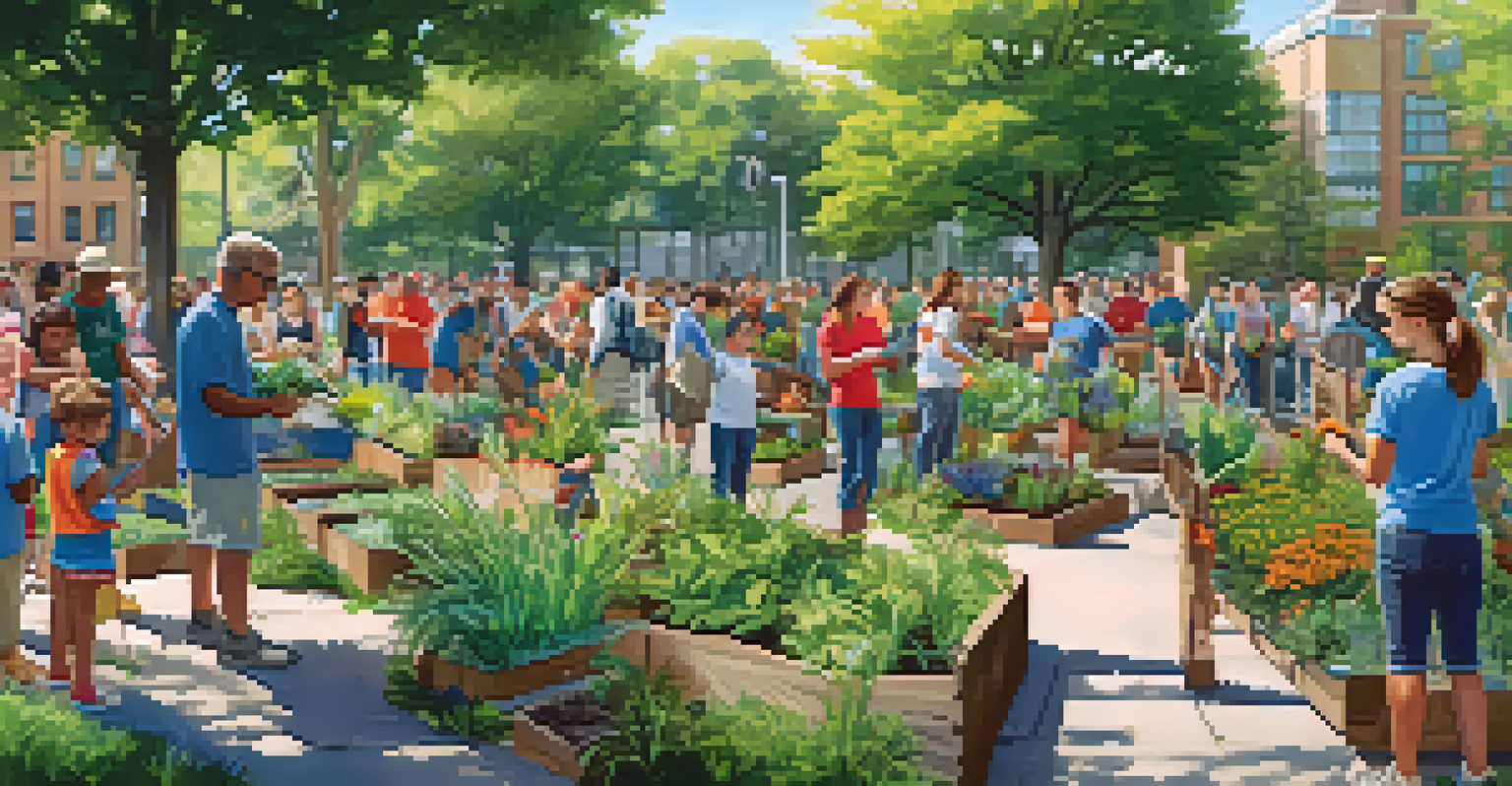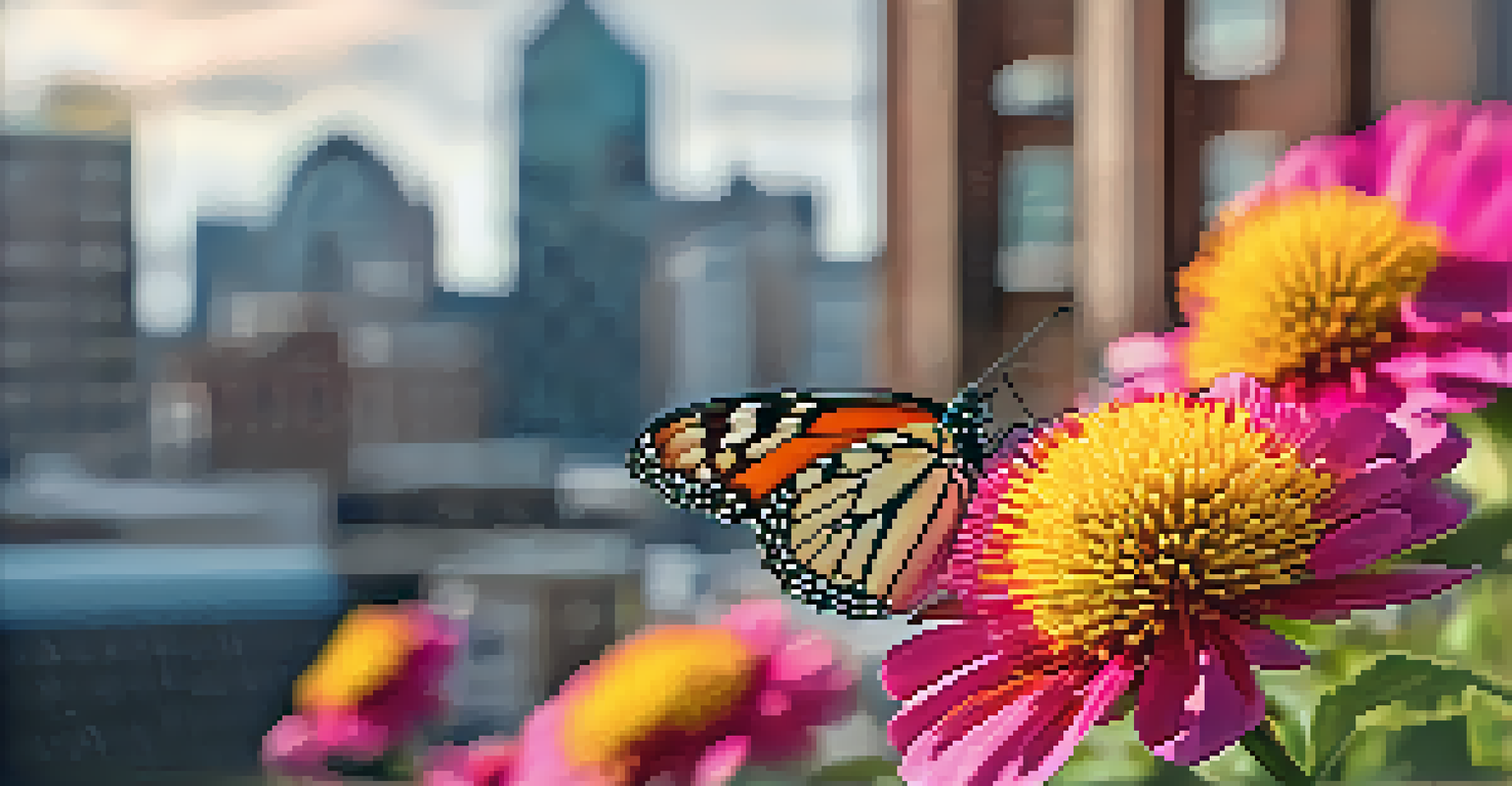How Climate Change Affects New York City's Urban Wildlife

Understanding Urban Wildlife in New York City
New York City is home to a surprising variety of wildlife, from squirrels and raccoons to hawks and even the occasional deer. These animals have adapted to thrive in an urban environment filled with parks, rivers, and green spaces. However, the backdrop of city life makes it challenging for them to navigate the impacts of climate change. As temperatures rise and weather patterns shift, the delicate balance of urban ecosystems is increasingly disrupted.
In nature, nothing exists alone.
Urban wildlife plays a significant role in maintaining ecological balance. Birds, for instance, help control insect populations, while pollinators like bees and butterflies contribute to plant health. Understanding how climate change affects these creatures is crucial for preserving biodiversity in the city. With every change in their environment, these animals face new obstacles that threaten their survival.
The effects of climate change aren't just felt by wildlife; they ripple through the entire urban ecosystem. As species adapt or relocate, the intricate web of life in New York City becomes more fragile. This interconnectedness underscores the need for city dwellers to be aware of how their actions impact local wildlife.
Rising Temperatures and Urban Wildlife Behavior
One of the most immediate effects of climate change is the increase in average temperatures. For many urban wildlife species, this can lead to behavioral changes such as altered feeding and breeding patterns. For example, some birds may migrate earlier in the year due to warmer temperatures, which can lead to mismatches in food availability and nesting times.

Additionally, heatwaves can be particularly challenging for animals that are not adapted to extreme heat. Species that thrive in cooler climates may struggle to find suitable habitats, potentially leading to a decline in their populations. This shift can create competition between native species and those that are more heat-tolerant, further complicating the urban wildlife landscape.
Climate Change Affects Urban Wildlife
Urban wildlife in New York City faces numerous challenges due to climate change, including habitat disruption and food scarcity.
As temperatures continue to rise, wildlife may venture closer to human-populated areas in search of food and shelter. This increased interaction can lead to conflicts, such as property damage or encounters with pets. It's essential for city residents to understand these changes and find ways to coexist with their urban wildlife neighbors.
Impact of Extreme Weather on Urban Animal Habitats
Climate change is not just about rising temperatures; it also brings more extreme weather events, such as heavy storms and flooding. These events can severely disrupt the habitats of urban wildlife, making it difficult for them to find food and shelter. For instance, a sudden storm can wash away nests or inundate areas where animals forage.
The greatest threat to our planet is the belief that someone else will save it.
Moreover, flooding can lead to changes in the distribution of plants, which are vital for herbivores and the animals that prey on them. As vegetation shifts, it can impact food chains and the overall health of wildlife populations. For example, if certain plants can't survive in the new conditions, animals that rely on them may also decline.
The frequency of extreme weather events is expected to increase, raising concerns about the long-term viability of urban wildlife. It’s crucial for city planners and conservationists to consider these factors when designing green spaces and wildlife corridors to support animal populations.
Changes in Food Sources for Urban Wildlife
As climate change alters the environment, food sources for urban wildlife are also affected. Changes in plant life due to shifting climates can lead to a decline in the availability of food for herbivores, which in turn impacts predators. For example, if flowering plants bloom earlier than usual, pollinators that depend on them may not have enough food when they emerge.
Additionally, as invasive species thrive in warmer conditions, they can outcompete native plants and animals for resources. This competition can lead to reduced biodiversity, making it harder for native wildlife to find food. For instance, invasive plants might spread rapidly, choking out local flora that provides essential sustenance to urban wildlife.
Pollution Weakens Wildlife Resilience
Pollution exacerbates the effects of climate change, making urban wildlife populations less resilient and increasing their vulnerability to environmental stressors.
Urban wildlife must adapt to these changes or risk facing food scarcity. Residents can play a role in supporting local wildlife by planting native species in their gardens, providing a stable food source that aligns with the natural cycles of local ecosystems.
Effects of Pollution on Urban Wildlife Resilience
Pollution is another significant stressor for urban wildlife, and its impacts are exacerbated by climate change. Contaminants in air, water, and soil can weaken animal populations, making them less resilient to environmental changes. For instance, birds exposed to high levels of pollution may have reduced reproductive success, compounding the pressures they face.
Moreover, climate change can increase the concentration of pollutants during heatwaves, creating toxic conditions for wildlife. This can lead to a decrease in animal health and an increase in disease prevalence. Consequently, urban ecosystems may become less stable, as weakened populations struggle to adapt to both pollution and climate change.
Addressing pollution is vital for enhancing the resilience of urban wildlife. Community initiatives aimed at reducing waste and improving air quality can help create a healthier environment for all living beings in the city.
Urban Wildlife Adaptation Strategies
Despite the numerous challenges posed by climate change, many urban wildlife species are remarkably resilient. Some animals are adapting their behaviors, such as altering their foraging habits or changing their breeding seasons to align with available resources. This flexibility can be a crucial factor in their survival amid changing conditions.
Habitat fragmentation is a significant concern; however, wildlife corridors and green spaces can provide critical pathways for animals to navigate the urban landscape. These areas can help maintain genetic diversity and allow for species to move in search of food and shelter as their environments change. Local parks and community gardens can serve as vital refuges for wildlife.
Community Engagement is Essential
Community involvement in conservation efforts can significantly enhance habitat preservation and support biodiversity in urban environments.
By creating supportive environments, urban residents can help wildlife adapt to climate change. Simple actions, such as reducing lawn areas and planting native species, can significantly contribute to the resilience of urban ecosystems.
Community Engagement in Protecting Urban Wildlife
Community engagement is essential in the fight against climate change and its impact on urban wildlife. Local initiatives can raise awareness about the importance of preserving habitats and supporting biodiversity. For instance, neighborhood clean-up events and educational programs can foster a sense of stewardship for local wildlife.
Moreover, citizen science projects allow residents to contribute valuable data about wildlife populations and their behaviors. By monitoring local species, communities can better understand the effects of climate change and advocate for necessary policy changes. These efforts can lead to meaningful conservation strategies that benefit both people and wildlife.

Finally, fostering a connection between residents and nature is crucial for building support for urban wildlife initiatives. By encouraging appreciation for local species, communities can create a culture of conservation that addresses the challenges posed by climate change.